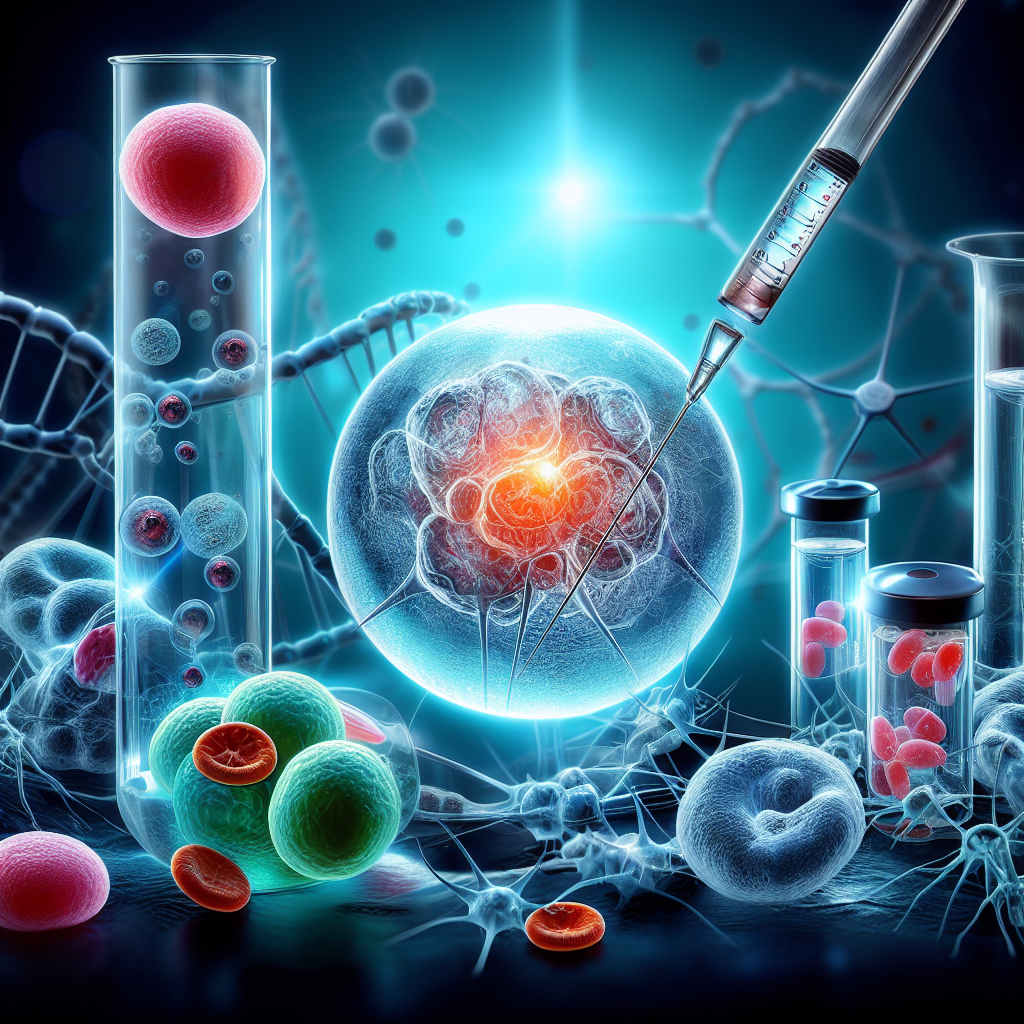 WhatsApp: +447778936902 , +33745637397, +34670491885
WhatsApp: +447778936902 , +33745637397, +34670491885
Stati Uniti e Monterrey, Messico
Terapia genetica, che comporta la modifica o la manipolazione dei geni per curare o prevenire le malattie, ha mostrato risultati promettenti in vari settori della medicina.
Da agosto 2017, gli Stati Uniti. La Food and Drug Administration ha approvato tre prodotti di terapia genica, il primo del loro genere.
Aging is one of the world’s most significant health challenges and is the root cause of many fatal diseases. Age-related processes are inevitable and lead to a variety of illnesses. Perciò, addressing aging itself is more efficient and effective than treating each age-related disease individually.
Telomeres, the protective caps at the ends of chromosomes, degrade as we age, leading to several problems, Compreso:
Genomic instability
Impairment of tissue replenishment
Increased cancer risk
Methods and options: Human hTERT gene, Klotho gene, FST follistatin gene or PGC1-a gene.
Most popular options: CNS Cogntive Enhancement Gene Therapy and Dual Gene Therapy – Follistatin and Telomerase Gene Therapy.
Therapeutic Benefits of Telomerase Induction –
Research has shown that inducing telomerase can extend the healthy lifespan of mammals by up to 24%. Other benefits include:
Enhanced bone mineral density
Increased skin rejuvenation and subcutaneous fat
Improved motor performance
Better insulin and IGF-1 metabolism biomarkers
Enhanced brain function and repaired neurogenesis
Many diseases are linked to shortened telomeres, and lengthening them can rejuvenate organs and improve overall health.
We currently offer:
Follistatin Gene Therapy is administered to patients for increasing muscle mass to combat frailty and type 2 diabetes.
Telomerase Gene Therapy induction is administered to patients for dementia, organ regeneration, and anti-aging properties.
Klotho Gene Therapy is administered to patients for dementia, reni, cardiopatia, and anti-aging properties.
Read on to learn more about each therapy and see the links to learn the science behind our technology.
Follistatin Gene Therapy
Myostatin inhibits muscle growth and causes muscle degradation. Follistatin Gene Therapy protects and encourages muscle growth, helping you develop a healthier and stronger body.
Some benefits of therapy may include:
- Increases muscle mass
- Improves strength & salute
- Enhances stamina
Follistatin is crucial because it helps to prevent sarcopenia (age-related muscle loss). Sarcopenia is a cause of frailty and death. Follistatin makes you stronger, più sano, and enhances your stamina. It significantly increases muscle mass and decreases muscle atrophy.
Telomerase Inducing Gene Therapy
Aging is one of the world’s most significant health problems. It is the cause of most fatal diseases. One of the critical processes in aging in shortening telomeres. At the end of every chromosome are telomere caps, which degrade as we age. This shortening causes many aging-related issues.
Some benefits of therapy may include:
- Enhanced bone mineral density
- Help with genomic stability
- Increased skin rejuvenation & subcutaneous fat
- Increased motor performance
- Improved insulin and IGF-1 metabolism biomarkers
- Better brain function & repaired neurogenesis
Klotho Gene Therapy
The expression of this gene results in the production of Klotho protein, which protects our vascular system (arteries and veins) from mineral deposits. Such deposits are harmful because they lead to what is known as “calcification” of our vascular system, a significant reason for death in patients with Chronic Kidney Disease or CKD. Perciò, not only is lack of the protein from this gene an early biomarker for CKD, but increased levels are a protectant against CKD.
Some benefits of therapy may include:
- Optimized Kidney Function
- Enhanced Learning & Cognitive Function
Here are detailed positive outcomes of gene therapy:
1. Treatment of Genetic Disorders
UN. Severe Combined Immunodeficiency (SCID):
- Success in ADA-SCID: One of the earliest successes in gene therapy was with adenosine deaminase deficiency (ADA-SCID), conosciuto anche come “bubble boy disease.” Patients treated with gene therapy showed restored immune function and were able to live normal lives without the need for enzyme replacement therapy .
B. Hemophilia:
- Factor IX and VIII: Gene therapy has been used to introduce functional copies of the genes responsible for producing clotting factors. Clinical trials have shown that patients with hemophilia B who received gene therapy for the factor IX gene experienced reduced bleeding episodes and decreased need for regular clotting factor infusions .
2. Cancer Treatment
UN. CAR-T Cell Therapy:
- Leukemia and Lymphoma: Chimeric antigen receptor T-cell (CAR-T) therapy involves modifying a patient’s T cells to express receptors specific to cancer cells. This therapy has led to significant remission rates in patients with refractory or relapsed B-cell acute lymphoblastic leukemia and non-Hodgkin lymphoma .
3. Ophthalmologic Disorders
UN. Leber’s Congenital Amaurosis (LCA):
- RPE65 Mutation: Gene therapy using an adeno-associated virus (AAV) vector to deliver a normal copy of the RPE65 gene has restored vision in patients with LCA, a rare inherited eye disorder that leads to blindness .
4. Neurological Disorders
UN. Spinal Muscular Atrophy (SMA):
- SMN1 Gene Replacement: Onasemnogene abeparvovec (Zolgensma) delivers a functional copy of the SMN1 gene to motor neurons. This has been particularly effective in infants with SMA type 1, significantly improving survival rates and motor function .
5. Muscular Disorders
UN. Duchenne Muscular Dystrophy (DMD):
- Microdystrophin Gene Therapy: Early trials using AAV vectors to deliver microdystrophin genes have shown promise in improving muscle function and reducing disease progression in boys with DMD .
6. Disturbi metabolici
UN. Lipoprotein Lipase Deficiency (LPLD):
- Glybera: The first gene therapy approved in Europe, Glybera, targets LPLD, a rare disorder that leads to severe pancreatitis. Patients treated with Glybera showed long-term reductions in pancreatitis episodes and improvements in lipid profiles .
Mechanisms and Advancements
Gene therapy utilizes various vectors, predominantly viral vectors such as adenovirus, adeno-associated virus (AAV), and lentivirus, to deliver therapeutic genes into patients’ cellule. Each type of vector has its advantages and challenges:
- AAV vectors are known for their safety and long-term gene expression, particularly in non-dividing cells, making them suitable for conditions like LCA and SMA.
- Lentiviral vectors integrate into the host genome, providing a permanent solution, which is beneficial for disorders like SCID and some forms of hemophilia.
Future Directions
The future of gene therapy looks promising with ongoing advancements:
- CRISPR/Cas9 technology is being explored for its precision in gene editing, potentially offering cures for a broader range of genetic disorders.
- Non-viral delivery methods such as nanoparticles and liposomes are being developed to reduce the risk of immune reactions and insertional mutagenesis.
Complessivamente, gene therapy represents a revolutionary approach in the treatment of previously incurable genetic and acquired diseases, with numerous successful outcomes paving the way for further innovations and applications in medicine.
Utilizzando il nostro servizio Chiedi a un medico, puoi inviare le tue domande a un Dottore e il Dottore ti risponderà in pochi minuti. È come se stessi avendo uno scambio di e-mail con il tuo medico privato!
 WhatsApp: +447778936902 , +33745637397, +34670491885
WhatsApp: +447778936902 , +33745637397, +34670491885
e-mail: head_office@nbscience.com


